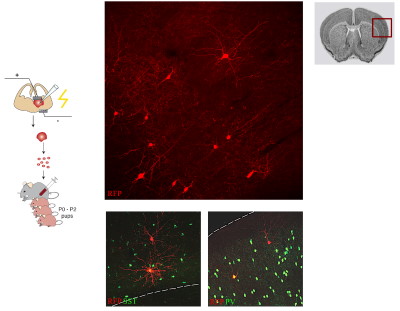08/10/2019
Cortical Interneurons (CIs), one of the two major neuronal populations of the cortex, are fundamental for normal brain function. Interneuron deficits have been associated with a number of neurodevelopmental disorders such as epilepsy, schizophrenia and autism spectrum disorders.
Young Interneurons migrate long distances during normal embryonic development, before they integrate into cortical circuits. This remarkable ability to disperse and integrate into a developing network can be hijacked by transplanting embryonic interneuron precursors into early post-natal host cortices. This protocol is tailored-made to genetically modify the activity of CI precursors using chemogenetics, in order to study the impact of intrinsic activity on CI maturation, and the effect of activity modulated CIs on the assembly/function of the integrated cortical circuits.
“In addition to what we describe here, this methodology can be used to investigate the therapeutic potential of cell transplantations in animal models of neurological disorders”, says Dr. Myrto Denaxa. “Also, in combination with human iPSC and Crispr/Cas technologies, it provides a powerful tool to interrogate neurological disease mechanisms”.
https://www.ncbi.nlm.nih.gov/pubmed/31498303
doi: 10.3791/59568
